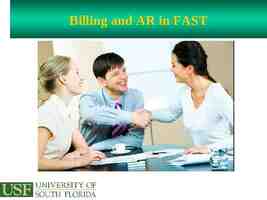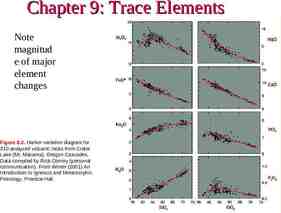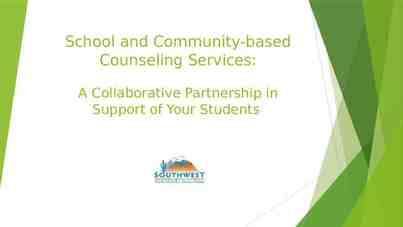Beyond Traffic: The Smart City Challenge Information Session #5:
54 Slides7.32 MB

Beyond Traffic: The Smart City Challenge Information Session #5: Urban Freight and Logistics January 6, 2016 U.S. Department of Transportation (USDOT)

Beyond Traffic: The Smart City Challenge Encourage cities to put forward their best and most creative ideas for innovatively addressing the challenges they are facing. The Smart City Challenge will address how emerging transportation data, technologies, and applications can be integrated with existing systems in a city to address transportation challenges. Demonstrate how advanced data and intelligent transportation systems (ITS) technologies and applications can be used to reduce congestion, keep travelers safe, protect the environment, respond to climate change, connect underserved communities, and support economic vitality. U.S. Department of Transportation 2

Beyond Traffic: The Smart City Challenge Phase 1 (Deadline February 4, 2016): Support concept development and planning activities Estimated five Smart City Challenge Finalists 100K each Phase 2 (Solicitation and Deadline TBD): Smart City Challenge Finalists Support implementation of their proposed demonstration 50 Million U.S. Department of Transportation: 40 Million Vulcan Foundation: 10 Million U.S. Department of Transportation 3

Advanced Technologies and Smart Cities Technology convergence will revolutionize transportation, dramatically improving safety and mobility while reducing costs and environmental impacts Connected Connected Vehicles Vehicles Benefits Benefits Vehicle Vehicle Automation Automation Connected-Automated Vehicles Internet Internet of of Things Things Machine Machine Learning Learning Big Big Data Data Mobility Mobility on on Demand Demand Smart Cities Order Order of of magnitude magnitude safety safety improvements improvements Reduced Reduced congestion congestion Reduced Reduced emissions emissions and and use use of of fossil fossil fuels fuels Improved Improved access access to to jobs and services jobs and services Reduced Reduced transportation transportation costs costs for for gov’t gov’t and and users users Improved Improved accessibility accessibility and mobility and mobility U.S. Department of Transportation 4

The USDOT’s Vision for a Smart City The USDOT recognizes that each city has unique attributes, and each city’s proposed demonstration will be tailored to their vision and goals. The USDOT’s vision for a Smart City Challenge is “to identify an urbanized area where advanced technologies are integrated into the aspects of a city and play a critical role in helping cities and their citizens address challenges in safety, mobility, sustainability, economic vitality, and address climate change.” To assist cities, the USDOT identified twelve (12) vision elements that are intended to provide a framework for Applicants to consider in the development of a city’s proposed demonstration without making each item a requirement for award. U.S. Department of Transportation 5

Beyond Traffic: The Smart City Challenge Technology Elements (Highest Priority) Vision Element #1 Vision Element #2 Vision Element #3 Urban Automation Connected Vehicles Intelligent, SensorBased Infrastructure Innovative Approaches to Urban Transportation Elements (High Priority) Vision Element #4 Vision Element #5 Vision Element #6 User-Focused Mobility Services and Choices Urban Analytics Urban Delivery and Logistics Vision Element #8 Vision Element #9 Smart Grid, Roadway Electrification, & EVs Connected, Involved Citizens Vision Element #7 Strategic Business Models & Partnering re-charging Smart City Elements (Priority) Vision Element #10 Vision Element #11 Vision Element #12 Architecture and Standards Low-Cost, Efficient, Secure, & Resilient ICT Smart Land Use U.S. Department of Transportation 6

Beyond Traffic: The Smart City Challenge Technology Elements (Highest Priority) Vision Element #1 Vision Element #2 Vision Element #3 Urban Automation Connected Vehicles Intelligent, SensorBased Infrastructure Innovative Approaches to Urban Transportation Elements (High Priority) Vision Element #4 Vision Element #5 Vision Element #6 User-Focused Mobility Services and Choices Urban Analytics Urban Delivery and Logistics Vision Element #8 Vision Element #9 Smart Grid, Roadway Electrification, & EVs Connected, Involved Citizens Vision Element #7 Strategic Business Models & Partnering re-charging Smart City Elements (Priority) Vision Element #10 Vision Element #11 Vision Element #12 Architecture and Standards Low-Cost, Efficient, Secure, & Resilient ICT Smart Land Use U.S. Department of Transportation 7

Today’s Speakers Caitlin Rayman – Federal Highway Administration (FHWA) Tamiko Burnell – Federal Highway Administration (FHWA) Stephen Shafer – Maritime Administration (MARAD) Brian Routhier – Federal Motor Carrier Safety Administration (FMCSA) Travis Black – Maritime Administration (MARAD) U.S. Department of Transportation 8

Vision Element #4 Urban Delivery and Logistics This vision element includes the use of data or deployment of technologies to reduce congestion, improve safety, and protect the environment for a more efficient supply chain U.S. Department of Transportation 9

Freight Trends As populations increase and urbanization continues, cities will need to identify innovative ways to effectively and efficiently move goods – including food, energy, and manufactured goods – into cities The country’s 100 largest metro areas drive national goods trade More than 80% of all U.S. goods movements either start or end in these cities Just 10% of U.S. trade corridors move 79% of all goods In 2010, 16.2 trillion of the 20.3 trillion in goods movement occurred in these metro areas U.S. Department of Transportation 10

Goods Movement in the U.S. Top 1 Percent of Trade Corridors Based on Value, Domestic Corridors Only, 2010 U.S. Department of Transportation 11

Freight Movement is Multimodal Our freight system is a multimodal engine that we depend on to drive our economy Source: Beyond Traffic 2045 U.S. Department of Transportation 12

Intermodal Freight Source: Beyond Traffic 2045 Intermodal freight transport involves the transportation of freight in an intermodal container using multiple modes of transportation (rail, ship, and truck), without any handling of the freight itself when changing modes. This method reduces cargo handling, improves security, reduces damage and loss, and allows freight to be transported faster U.S. Department of Transportation 13

Supply Chains Supply Chain Examples Gasoline & Petroleum Food Services Supermarket Grocery Big Box Retail Retail Drug Store Apparel Retail Pharmaceutical and Biotechnology Construction Materials Waste & Recyclables Others U.S. Department of Transportation 14

First and Last Mile Delivery U.S. Department of Transportation 15

Emerging Goods Movement Trends Online Shopping: Online shopping makes it possible for companies to bypass traditional storefronts. While online shopping reduces travel associated with shopping trips, these services are likely to increase truck traffic in urban areas as goods are delivered to residencies. 3D Printing: This technology has the potential to disrupt traditional supply chains and counteract the growth of imports by reducing the need for large-scale manufacturing, transportation, and storage. U.S. Department of Transportation 16

Challenges and Opportunities Safety Truck Safety Geometric Design Weather-related Challenges Congestion Scheduling and Logistics Parking Urban Parking Long Haul Parking How can innovative solutions and advanced technologies be used to address these challenges? Environment U.S. Department of Transportation 17

Challenge: Safety Freight transportation is involved in approximately 13 percent of all transportation fatalities 3,964 people were killed in crashes involving large trucks in 2013 Large trucks are less likely to be involved in crashes than passenger vehicles, but crashes involving trucks are more likely to be fatal The need to transport increasing amounts of freight to large urban areas in the future could increase conflicts between freight and passenger traffic U.S. Department of Transportation 18

Opportunities to Improve Safety Connected Vehicles U.S. Department of Transportation 19

Opportunity: Connected Vehicles Vehicle-to-Vehicle (V2V) Communications for Trucks Connected vehicle applications developed for truck platforms are being designed to be interoperable with all other vehicle platforms. Examples of V2V safety applications for heavy vehicles include: Forward Collision Warning Blind Spot Warning/Lane Change Warning Intersection Movement Assist Electronic Emergency Brake Light In 2014, NHTSA announced an Advanced Notice of Proposed Rulemaking (ANPRM) for V2V on Light Vehicles and has stated their intent to make an agency decision on V2V safety technology for heavy vehicles. U.S. Department of Transportation 20

Opportunity: Safety Applications Dynamic Speed Limits Dynamic downhill truck speed warning system on I-70 (Denver, CO) Variable truck speed limit on I-84 (Pendleton, OR) Dynamic Truck Restrictions Source: ENTERPRISE Pooled Fund Study Source: Wyoming DOT Wind warning for high profile vehicles on I-25 (Wyoming) U.S. Department of Transportation 21

Challenge: Geometric Design Design Issues Turning radius Height/width clearances that often affect the ability of large vehicles to maneuver safely among other motorists At‐grade crossing clearance and distance of rail lines from parallel highway corridors Road Diet (Context Sensitive Design): Impacts to freight delivery at local businesses U.S. Department of Transportation 22

Opportunities: Safety Applications At Grade Rail Crossing: Warns drivers of an approaching train if there is potential risk of collision Curve Speed Warning: Allows connected vehicles to receive information that it is approaching a curve along with the recommended speed for the curve Overheight Detection: Detects overheight vehicles moving toward obstacles such as bridges, tunnels and other overhead structures and individually warns drivers U.S. Department of Transportation 23

Challenge: Weather-related Safety Approximately 22% of all vehicle crashes are weather-related Weather-related crashes include crashes that occur in adverse weather (i.e., rain, sleet, snow, fog, severe crosswinds, or blowing snow/sand/debris) or on slick pavement (i.e., wet pavement, snowy/slushy pavement, or icy pavement) Each year trucking companies lose an estimated 32.6 billion vehicle hours due to weather-related congestion in 281 of the nation's metropolitan areas Nearly 12 percent of total estimated truck delay is due to weather in the 20 cities with the greatest volume of truck traffic The estimated cost of weather-related delay to trucking companies ranges from 2.2 billion dollars to 3.5 billion dollars annually Source: " Analysis of Weather Incident Effects on Commercial Vehicle Mobility in Large U.S. Cities," Mitretek Systems U.S. Department of Transportation 24

Opportunity: Road Weather Operations Connected Vehicle Pilot (Wyoming) Wyoming’s Connected Vehicle (CV) Pilot Demonstration Project seeks to improve safety and monitor performance on I-80. Weather events common to the corridor are ice and snow covered road surfaces, poor visibility, and high wind events. Between 2002 and 2012, over 3,472 high-wind crashes occurred. The demonstration will develop applications that use V2I connectivity to support a flexible range of services that improves safety and mobility for heavy vehicles. For More Information: http://www.its.dot.gov/pilots/wave1.htm U.S. Department of Transportation 25

Questions U.S. Department of Transportation 26

Challenge: Congestion Freight demand is expected to be concentrated in metropolitan areas. Congestion in several metropolitan population centers is already severe and could become more extreme by 2045. Increasing freight demand in these densely populated areas will complicate “first mile” movement of goods out of ports and the “last mile” movement of goods from freight hubs to their final destinations. U.S. Department of Transportation 27

Challenge: Scheduling and Logistics Wait Times Receiver Scheduling On-time Pickup and Delivery U.S. Department of Transportation 28

Opportunity: Freight Advanced Freight Traveler Information System (FRATIS) Freight-Specific Dynamic Planning and Performance Data on wait times at intermodal facilities, traffic conditions, incidents, road closures and work zones, route restrictions, and truck parking availability. Provides adaptive communication between drayage companies, drivers, and intermodal facilities, along with real-time information and dynamic routing for drivers. Drayage Optimization Seeks to optimize truck/load movements between freight facilities. Uses travel information and port terminal conditions to assign individual trucks with “best time” windows for pick-up or drop-off so that they can optimize operations. Fore More Information: http://www.its.dot.gov/pilots/wave1.htm U.S. Department of Transportation 29

Opportunity: FRATIS 1. Drayage companies receive their orders for a given day U.S. Department of Transportation 30

Opportunity: FRATIS 2. Orders are collected and run through an optimization algorithm to create optimized plan U.S. Department of Transportation 31

Opportunity: FRATIS 3. The optimized plan is reviewed and approved by the dispatcher U.S. Department of Transportation 32

Opportunity: FRATIS 4. The optimized driver plans are distributed to each truck drivers through in-vehicle units U.S. Department of Transportation 33

Opportunity: FRATIS 5. Changes to orders are sent directly to the drivers U.S. Department of Transportation 34

Opportunity: FRATIS 6. Order status information is sent directly back to the drayage companies U.S. Department of Transportation 35

Opportunity: Off-Peak / Overnight Deliveries Trucks deliver goods to stores during off-peak hours or overnight When there is no personnel available for the reception of the goods, delivery systems can be used, like drop boxes or safes Incentives may be provided to trucking companies and businesses to shift delivery to overnight/off-peak hours U.S. Department of Transportation 36

Opportunity: Consolidation Centers Features mega size warehouses on the outskirts of the city with smaller decentralized warehouses inside the city: Heavy commercial vehicles carry goods to big warehouses on the outskirts of the city. From there, medium and light commercial vehicles would deliver goods to a warehouse within a city. These vehicles may include electric vehicles and in the future, smaller automated vehicles, or shared-use vehicles. May consider load consolidation strategies U.S. Department of Transportation 37

Opportunity: Advanced Freight Traveler Information Truck-specific 511 Page Source: Iowa DOT U.S. Department of Transportation 38

Opportunity: Dynamic Routing Thru traffic and local deliveries have different information needs Thru traffic: Road closure, construction, or accidents that could lead to congestion Local deliveries: Weight, HAZMAT, and loading zone restrictions that could impact route or timing of delivery Dynamic Routing Opportunities Communicate information for commercial vehicles via dynamic message signs, Highway Advisory Radio, and Truck-specific 511 Provide dynamic guidance and re-routing opportunities based on current conditions Utilize dynamic pricing to level demand and reduce congestion during peak times U.S. Department of Transportation 39

Opportunity: Traffic Signal Operations Freight Signal Priority (FSP) Provides traffic signal priority for freight and commercial vehicles traveling in a signalized network Saves time Reduces fuel consumption and emissions Traffic Signal Timing Advanced traffic signal timing applications in heavy‐ use truck corridors can reduce delay for trucks in urban environments U.S. Department of Transportation 40

Questions U.S. Department of Transportation 41

Challenge: Parking Urban Parking Limited parking for delivery vehicles Vehicles parked in loading zones Design issues Lack of enforcement Long Haul Parking Truck parking shortages Limited parking information U.S. Department of Transportation 42

Opportunity: Dynamic Truck Parking Smart Truck Parking Enhance highway safety by providing timely and reliable truck parking information Dynamic message signs prior to parking location provide truckers with information about current parking availability Information may also available via websites, mobile apps, and through connected vehicle technologies Source: Michigan DOT U.S. Department of Transportation 43

Opportunity: Smart Truck Parking Leveraging Connected Vehicle Technologies U.S. Department of Transportation 44

Challenge: Transportation and the Environment The transport sector in the U.S. accounts for 27% of greenhouse gas (GHG) emissions and 70% of U.S. petroleum consumption Light duty vehicles and heavy trucks are the greatest fuel users in the transport sector Source: EPA. Inventory of U.S. Greenhouse Gas Emissions and Sinks, 1990 to 2010. 2012. U.S. Department of Transportation 45

Challenge: Trucks and GHG Emissions Heavy trucks are responsible for most of the growth in greenhouse gas emissions in the freight sector U.S. Department of Transportation 46

Opportunity: Eco-Driving Sensors can be used to track the drivers' habits and provide real-time feedback to drivers Fuel waste stems from hard accelerations, hard braking, hard turning, the inability to maintain a constant speed, and excessive idling A 2011 report suggested that ecodriving strategies could improve fuel efficiency by up to 22 percent saving commercial truck operators more than 12,500 a year per truck Source: SmartDrive Systems, whose products track individual driving habits for fleet operators U.S. Department of Transportation 47

Opportunity: Catenary Systems The Ports of Los Angeles and Long Beach’s e-highway concept consists of an overhead catenary system running along the outside lanes of both sides of the road leading to the port Specially outfitted hybrid or allelectric trucks can attach to the system using automated currenttransfer devices called pantographs (similar to trolleys) Once connected, the trucks can pull all their power from the overhead lines, effectively becoming emission-free vehicles U.S. Department of Transportation 48

Emerging Area: Automation Fully and partially automated trucks, ships, and planes, and automatic freight-transfer facilities, may eventually transform the freight industry Automated features to improve the safety and efficiency of freight movement are already being introduced On trucks, initial automation systems combine adaptive speed control, automatic braking, lane-departure warning systems, and vehicle-to-vehicle (V2V) communications In the long-term, driverless cars could be used for last mile delivery to deliver packages to centrally located, self-service stations At warehouses and ports, self-driving vehicles can load and unload goods U.S. Department of Transportation 49

Opportunity: Automation at Ports Automation is being used at major container ports around the world. The process of transferring containers from ships to docks, trucks, and trains is becoming highly automated, reducing reliance on human operators. U.S. Department of Transportation 50

Questions U.S. Department of Transportation 51

Beyond Traffic: The Smart City Challenge For More Information U.S. Department of Transportation 52

Beyond Traffic: The Smart City Challenge Information Sessions Data, Architecture, and Standards (Virtual) 12/16/2015 (1:00 to 2:30 pm EST) Connected Vehicles and Automation (Virtual) 12/17/2015 (1:00 to 2:30 pm EST) Sharing Economy, User-Focused Mobility, and Accessible Transportation (Virtual) 12/18/2015 (1:00 to 2:30 pm EST) The Smart City Challenge Application and Selection Process (Virtual) 12/21/2015 (1:00 to 2:00 pm EST) Urban Freight and Logistics (Virtual) 1/6/2016 (11:30 am to 1:00 pm EST) To access presentations and listen to recordings, visit: https:// www.transportation.gov/smartcity/infosessions U.S. Department of Transportation 53

Beyond Traffic: The Smart City Challenge For More Information and Questions Department of Transportation https://www.transportation.gov/ Smart City Challenge www.transportation.gov/smartcity Questions? [email protected] U.S. Department of Transportation 54






